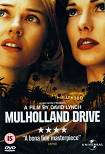Film and T.V. reviews/articlesSCOPOPHLIA IN MULHOLLAND DRIVE.
|
|
...And above all else, men like to look at women. Most films center around a male protagonist and so, immediately, men identify with the film on some basic level and therefore also, the thoughts and urges ?men? generally have are brought out. Mulvey goes on to say that the strength of any female protagonist is more apparent than real. This is partly due to societal trends as well as cinematic ones. But cinema tends to perpetuate society?s prejudices, stereotypes and sexual idiosyncrasies so maybe it is worth investigating. Johnston points out that ?Myth uses icons, but the icon is its weakest point.? And so in acquiring society?s insecurities about sex and culture, the cinema does more harm than good since it only widens the gap between the utopian balance everyone seems to be striving for and true reality. ?? the stereotyping of man was increasingly interpreted as contravening the realization of the notion of ?character?; in the case of women, this was not the case; the dominant ideology presented her as eternal and unchanging.? So men arose as the ever-developing, interesting protagonist, while women were regarded as unchanging, un-adaptive, always in the home, taking care of the family. Cinema is classic in this perception. It is important, then, to notice deviations when they occur and encourage their integration into the norm. David Lynch?s Mulholland Drive is a distinct deviation from conventional cinema in almost every way. Notably so in its dealing with female characters (both protagonists are women.) While Lynch is a male director constructing a female reality, and though it can be argued that the ?male gaze? is present throughout the film, it is also true that the two main female characters are portrayed strongly, faithfully and independent of any male entanglements. In fact, as a contrast to the rest of the story, in the switch-back of the third act, Camilla is presented as having attained fame and fortune only due to her femininity and relationship with a Hollywood director. For this, she is hated by Diane (and later ? or earlier ? killed.) In this respect, Mulholland Drive transcends Mulvey?s notions of Freudian phallocentrism in film and establishes its own state of being; a reality inhabited by two women who are in love, independent of men, but at the same time are photographed by Lynch in a very ?Woman as image; men as bearer of look? kind of way. The male gaze serves in part to make the material ? at first glance ? approachable by males but also to accentuate the relationship and play on a variation of established Hollywood techniques to assemble a bizarre whole. Mulholland Drive?s idea of borrowing tidbits of theme, plot, style and cliché from elsewhere is an interesting way to build upon a read-made foundation and succeed in creating something greater than the sum of the parts. Robin Wood, in his discussion of ideology, says that ?[critics should] be able to draw on the discoveries and particular perceptions of each theory, each position, without committing themselves exclusively to any one.? So why not apply the same theory to film-making as well as film criticism. Lynch proves eloquently that a combination of elements can be assembled into a jarring ? yet thematically seamless ? whole. Comolli and Narboni say that the camera does not represent reality as many claim. Rather, the camera is a tool to represent reality with respect to ? and filtered through ? an ideology of the director?s choosing. And Lynch?s camera portrays the wicked and warped world of his own design while stopping in seemingly familiar places along the way. ?Every film is political?, Comolli and Narboni said. So what is Lynch?s politic? Most likely, he?s lashing out against Hollywood by turning its weapons of mass-degeneratization against it as well as the audience. While it would be unfair to say that challenging films are few and far between these days, it is more than justifiable to be skeptical of Hollywood?s attempts at ?art? for the sake of ?street cred? in the pool of world cinema. Good films cannot be churned out from trite formulae and it is the eternal job of the critic to catch Hollywood in the act and keep them in line. To do this, as Wood suggests, it is necessary to be well-versed in a multitude of cinematic ideologies that make possible objective, thorough and helpful criticism. It must also be never forgotten that double-standards are as real in cinema as they are in certain aspects of our society and identifying, questioning and overriding these stereotypes is a job not only for the Mulveys and Johnstons of the film world, but all critics and film-makers. It is impossible to make a film without vision and so, that vision must not be blurred by flawed or unchallenging ideologies. Cinema is one of the most powerful tools of modern communication. To make a message worth seeing is the duty of anyone who would call themselves a film-maker. |


